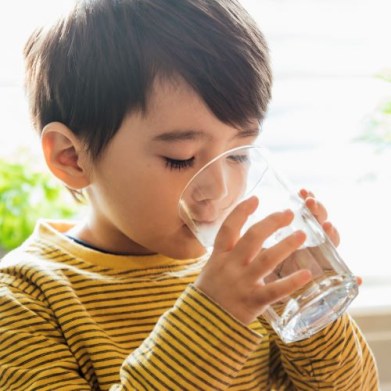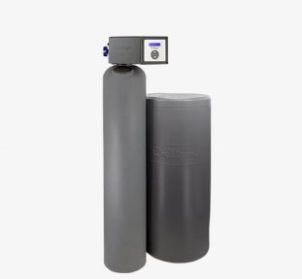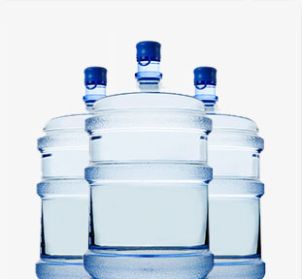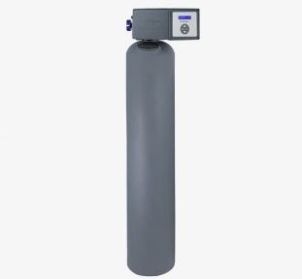
What To Know About Cincinnati Water Quality

Ohio may be a landlocked state, but water is still a big part of its story — particularly in Cincinnati. Nestled against the Ohio River, the “Queen City” is known for incredible food, unique historical architecture and parks by the water. Whether you’re already a local or are moving to the area, it’s easy to see how Cincinnati culture is influenced by its position in the Ohio River basin.
That’s all great for the hiking trails and festivals that bring the city to life — but what does it mean for your home’s drinking water? Here’s what to know about Cincinnati water quality (and how you may want to improve it).
Is It Safe To Drink Tap Water in Cincinnati?
Good news: No matter where you are in North America, the chances are high that your municipal tap water is generally safe to drink. That’s because government bodies in the U.S. and Canada establish parameters like the National Primary Drinking Water Regulations and Guidelines for Canadian Drinking Water Quality to protect what’s in your glass. These rules establish limits for various contaminant types that could have negative impacts on drinking water quality and safety.*
On top of that, most cities also put their water through vigorous filtration and treatment processes. If you’ve ever turned on the tap and smelled something like a swimming pool, you’ve noticed the effects firsthand: Chlorination is one particularly common way to disinfect the water supply.
Does that mean all tap water is always safe to drink? Not necessarily. For some water issues, such as accidental contamination, your city may release a boil advisory or similar notification warning you to be careful how you use your tap. In the most serious cases, you may want to switch to drinking bottled water until the problem is resolved. Fortunately, this doesn’t happen too often.
Cincinnati Water Quality
Although tap water is often safe, it can have different characteristics depending on local conditions. For example, if the source water naturally has certain types of algae blooms, your tap water could have aesthetic issues, such as discoloration or odd odors, that impact enjoyment but not health.
In Cincinnati, utilities such as Greater Cincinnati Water Works (GCWW) get source water from the Ohio River and the Great Miami Buried Valley Aquifer (GMBVA). These sources provide surface water and groundwater respectively. According to the Ohio Environmental Protection Agency (EPA), this poses a few concerns:
- Ohio River: All surface water is highly susceptible to certain contaminant types. City treatment and country-wide water regulations anticipate and address these possibilities.
- Great Miami Buried Valley Aquifer: The Ohio EPA classified Cincinnati’s portion of the GMBVA as “highly susceptible to contamination due to lack of an overlaying protective clay layer, the presence of low levels of nitrate in the groundwater and […] nearby potential contaminant sources.”
For residents of the Queen City, that can raise some questions. Fortunately, GCWW has answers, which you can also find easily at hand in the local Water Quality Report. It’s required for water providers to publish these reports, also known as Consumer Confidence Reports, annually.
This water utility uses multiple levels of treatment to ensure that your drinking water is protected. These include:
- Sand Filtration
- Granular Activated Carbon (GAC)
- Powdered Activated Carbon (PAC)
- Ultraviolet (UV) Light
Additionally, GCWW uses a treatment process called corrosion control to minimize the amount of lead potentially present in drinking water. This also helps reduce the chance that some home plumbing could leach this contaminant into the water supply.
On top of that, the water utility performs more than 600 tests per day to ensure that its efforts are efficient and effective. GCWW uses these tests on source water and after every treatment step. Experts even take a water sample from the distribution system itself to catch potential problems.
Should You Filter Cincinnati Drinking Water?
Although it’s clear that the GCWW works hard to provide high-quality water for its customers, there are still a few reasons you may want to add another layer of filtration to your home’s water supply.
The truth is that almost all water can benefit from some kind of additional filtration, even if it’s technically safe to drink. For example, water treated with chlorine is disinfected and generally not a risk to human health, but the odor and potential taste could make you want to reduce your water intake. Other issues, like “forever chemicals” or PFAS (perfluoroalkyl and polyfluoroalkyl substances), aren’t yet a standard part of monitoring systems or safe water guidelines, which is one more reason to consider home water treatment. It’s also important to remember that private or shared wells aren’t treated, managed or tested by the city, so filtration is entirely your responsibility.
In Cincinnati specifically, the GCWW discusses a few main concerns:
- Lead: Although the water utility uses corrosion control to limit lead issues, the city can’t be responsible for the quality of your home’s plumbing system.
- Rust: If your water appears reddish-brown, there’s a chance you’re seeing rust from corrosion in city or home plumbing or even in your water heater.
- Turbidity: Turbidity is a measurement of water’s clarity. Sometimes, cloudy water is caused by tiny air bubbles that are more likely to form in cold Ohio winters. Although air bubbles don’t impact your water’s safety or quality, ongoing cloudiness may be a different issue.
If you’ve noticed these or other water issues, it may be time to look into water filtration solutions. Depending on the nature of the problem, you can choose:
- Whole house filtration: Ideal for chlorine, sulfur, iron and other common concerns, these systems filter all the water that enters your home. These can work for both city water and well water filtration.
- Reverse osmosis drinking water filtration: As the name suggests, these systems focus on comprehensive drinking water filtration, using reverse osmosis to address a wide range of contaminants you wouldn’t want in your glass.
To determine which water filtration system is right for your home, it’s best to start with a professional water test. Your local water expert can tell you whether certain contaminants are present, what symptoms they cause and how to address them.
What About Water Hardness in Cincinnati?
While not directly related to drinking water, hardness levels are still important to Cincinnati’s overall water supply. That’s because hard water can lead to mineral deposits that cause stiff laundry, spotty dishes and even dry skin and hair — not to mention a lot of time and money spent on cleaning.
The GCWW says water at its plants has an average hardness between 22 mg per liter/7 grains per gallon and 134 mg per liter/8 grains per gallon. Based on standard water hardness measurements, this would be considered noticeably hard water (the second-highest hardness level).
That means you may have noticed symptoms of hard water in your Cincinnati home. Fortunately, water softeners help address these problems and more — and, better yet, your local water expert can recommend the best system during a free water test.
Improve Your Cincinnati Water Quality
Although Cincinnati water is generally safe to drink, it can always be better. That’s why it’s smart to have a professional water test — not just to find out what’s in your glass, but also to help you make informed decisions about treatment options. Fortunately, our tests only take about 30 minutes and give you all the information you need (plus personalized recommendations based on your water quality).
Ready to get started? Schedule your free, in-home water test and consultation.
*Contaminants may not be present in your water.
Find A Location Near Me

Schedule Your Free
In-Home Water Test
Get better water in your home by scheduling an appointment with your local Culligan Water Expert.
Discover More
See All Articles

Are There Side Effects of Drinking Tap Water?
Here’s what to know before you fill your glass.
9 min read

Explore

Explore
Our Products

Water Softeners
With any of our soft water systems, get more out of your water-using appliances while spending less on energy and detergent.
View Products

Water Delivery
There’s never been a better time to enjoy the convenience of scheduled bottled water deliveries from the Culligan® Water Experts
View Products

Water Filtration Systems
Culligan's water filtration systems have improved water quality for thousands of families worldwide.
View Products
